
Saint John is a seaport city located on the Bay of Fundy in the province of New Brunswick, Canada. It is Canada's oldest incorporated city, established by royal charter on May 18, 1785, during the reign of George III. The port is Canada's third-largest by tonnage with a cargo base that includes dry and liquid bulk, break bulk, containers, and cruise. The city was the most populous in New Brunswick until the 2016 census, when it was overtaken by Moncton. It is currently the second-largest city in the province, with a population of 69,895 over an area of 315.59 km2 (121.85 sq mi).

Aroostook County is a county in the U.S. state of Maine along the Canada–United States border. As of the 2020 census, the population was 67,105. The county seat is Houlton, with offices in Caribou and Fort Kent.

Bangor is a city in and the county seat of Penobscot County, Maine, United States. The city proper has a population of 31,753, making it the state's third-most populous city, behind Portland (68,408) and Lewiston (37,121). Bangor is known as the “Queen City.”

Mount Allison University is a Canadian primarily undergraduate liberal arts university located in Sackville, New Brunswick, founded in 1839.
Kenneth Colin Irving, was a Canadian businessman whose business began with a family sawmill in Bouctouche, New Brunswick, in 1882. In 1989, he was made an Officer of the Order of Canada.
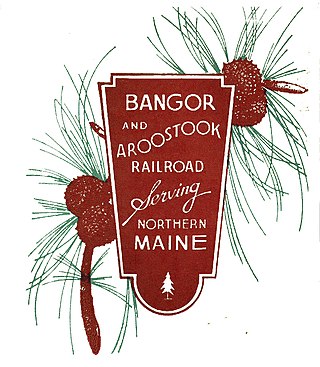
The Bangor and Aroostook Railroad was a United States railroad company that brought rail service to Aroostook County in northern Maine. Brightly-painted BAR boxcars attracted national attention in the 1950s. First-generation diesel locomotives operated on BAR until they were museum pieces. The economic downturn of the 1980s, coupled with the departure of heavy industry from northern Maine, forced the railroad to seek a buyer and end operations in 2003. It was succeeded by the Montreal, Maine and Atlantic Railway.
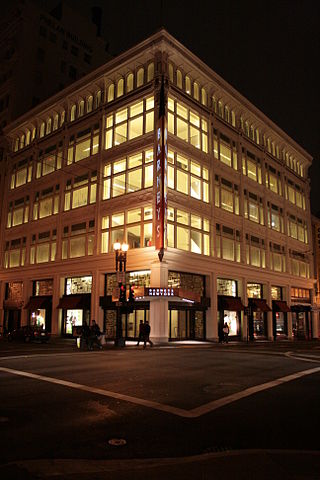
Barneys New York is an American department store chain founded in 1923 by Barney Pressman. The company operated full-line department stores in the United States from 1923 until 2020. Authentic Brands Group acquired Barneys' intellectual property in 2019, and has licensed the brand to Saks Fifth Avenue for specialty departments within its flagship stores since 2021.

House of Fraser and Frasers are a British department store chain with 29 locations across the United Kingdom, part of Frasers Group. It was established in Glasgow, Scotland in 1849 as Arthur and Fraser. By 1891, it was known as Fraser & Sons. The company grew steadily during the early 20th century, and after the Second World War a large number of acquisitions transformed the company into a national chain.
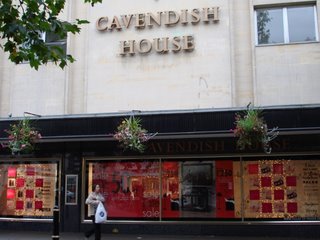
Cavendish House was Cheltenham's oldest department store, located on The Promenade. Its establishment was of great significance for Cheltenham's future reputation as a leading shopping centre. Known as 'Cavendish House' from its early days, its name was officially adopted with the registration of a limited liability company in 1883. The store became part of the House of Fraser group in 1970. The store closed in April 2024, after 201 years.

Fine Fare was a chain of supermarkets which operated in the United Kingdom from 1951 until 1988. During the 1960s the company was the largest operator of supermarkets in Europe. Their Yellow Pack budget own-label range, introduced in 1980, was the first own brand basic range to be introduced in the UK and in 1983 it was the first British supermarket to sell organic food. The business for the majority of its existence was owned by companies controlled by Garfield Weston and his family, but were sold in 1986 to the Dee Corporation, operators of Gateway Foodmarkets with the stores being rebranded.

The Rylands Building is a Grade II listed building and former department store on Market Street in Manchester, England. It is situated in the Smithfield conservation area, which was known for its markets and textile warehouses, close to the Piccadilly area of Manchester city centre.
William John West was a Canadian politician. He served in the Legislative Assembly of New Brunswick as member of the Progressive Conservative party from 1952 to 1960. Active as a Lawyer, politician, and judge, he was the son of Amelia Prince Small and Wesley West, was born at Cole's Island, Queens County, New Brunswick on 20 December 1892. Educated at local schools in Coles Island, he attended Gagetown Grammar School and later Mount Allison (B.A.) and Harvard (LL.B.) universities. In addition to farm work, he spent five years as a clerk in a country store, time as a lumberjack and rafter, and a year running a large sawmill. Although politics interested him from a young age, he followed his father's and grandfather's affiliation to the Progressive Conservative Party, it was only through an uncle that the law suggested itself as an option. Called to the New Brunswick bar in 1923, he practised law, first at Woodstock (1923-1928) and then in Fredericton under the firm name Hanson, Dougherty & West. In 1933 he married Katherine E. MacMurray, and the couple raised two daughters, Mary (Pratt) and Barbara (Cross).

Walter Woodworth White was a Canadian physician and politician. He served in the Legislative Assembly of New Brunswick as member of the Conservative party representing Saint John City from 1931 to 1935. He would later work at the General Hospital in Saint John.
The New Brunswick Dragoons was a cavalry regiment of the Non-Permanent Active Militia of the Canadian Militia. In 1936, the regiment was Amalgamated with The Saint John Fusiliers.

Brunswick Square is a building complex located in Uptown Saint John, New Brunswick, Canada. It consists of a 3-storey shopping mall as well as a 19-storey Class A office tower. The complex contains a 700 capacity parking garage.
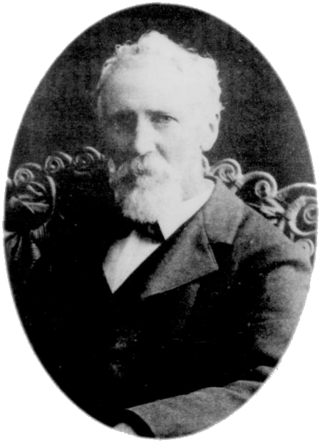
George Thomas Taylor was a Canadian photographer and painter whose work depicts the landscapes and everyday life of nineteenth-century New Brunswick. He is regarded as a pioneering nature photographer in Canada.
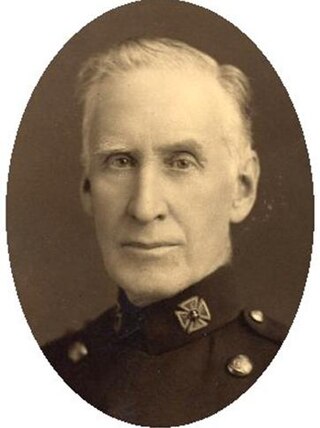
William Odber Raymond was a Canadian clergyman and historian from New Brunswick. While serving as a rector in Saint John, he contributed towards writing and editing historical works of Loyalist settlement in New Brunswick, having spent several years contributing for and serving as the president of the New Brunswick Historical Society. His 1905 writing Glimpses of the Past: History of the River St. John contains a record of what is likely to be the first known Black individual in what is now New Brunswick.

The Acadian Society of New Brunswick (SANB) is a French Canadian advocacy organization representing Francophones and Acadians in the province of New Brunswick.
Thomas J. Higgins was a Canadian educator and municipal politician who served as the mayor of Saint John, New Brunswick from 1994 to 1995. He was Saint John's first Catholic mayor.














